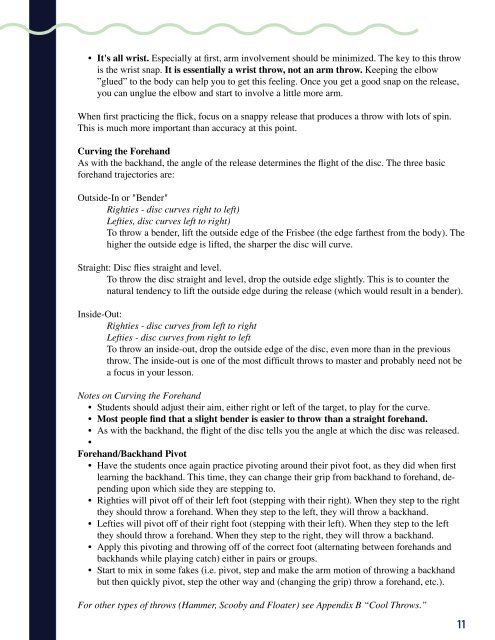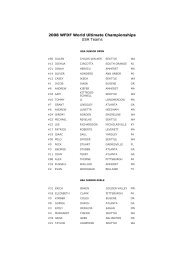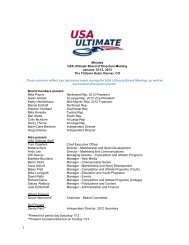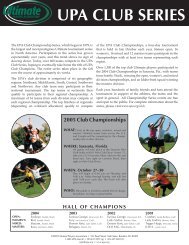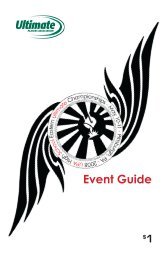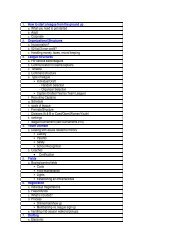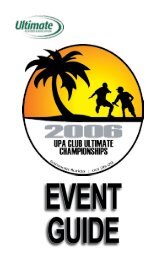Rhythms of Life Disc Skills Curriculum Grades 3-7 - USA Ultimate
Rhythms of Life Disc Skills Curriculum Grades 3-7 - USA Ultimate
Rhythms of Life Disc Skills Curriculum Grades 3-7 - USA Ultimate
You also want an ePaper? Increase the reach of your titles
YUMPU automatically turns print PDFs into web optimized ePapers that Google loves.
• It's all wrist. Especially at first, arm involvement should be minimized. The key to this throwis the wrist snap. It is essentially a wrist throw, not an arm throw. Keeping the elbow”glued” to the body can help you to get this feeling. Once you get a good snap on the release,you can unglue the elbow and start to involve a little more arm.When first practicing the flick, focus on a snappy release that produces a throw with lots <strong>of</strong> spin.This is much more important than accuracy at this point.Curving the ForehandAs with the backhand, the angle <strong>of</strong> the release determines the flight <strong>of</strong> the disc. The three basicforehand trajectories are:Outside-In or "Bender"Righties - disc curves right to left)Lefties, disc curves left to right)To throw a bender, lift the outside edge <strong>of</strong> the Frisbee (the edge farthest from the body). Thehigher the outside edge is lifted, the sharper the disc will curve.Straight: <strong>Disc</strong> flies straight and level.To throw the disc straight and level, drop the outside edge slightly. This is to counter thenatural tendency to lift the outside edge during the release (which would result in a bender).Inside-Out:Righties - disc curves from left to rightLefties - disc curves from right to leftTo throw an inside-out, drop the outside edge <strong>of</strong> the disc, even more than in the previousthrow. The inside-out is one <strong>of</strong> the most difficult throws to master and probably need not bea focus in your lesson.Notes on Curving the Forehand• Students should adjust their aim, either right or left <strong>of</strong> the target, to play for the curve.• Most people find that a slight bender is easier to throw than a straight forehand.• As with the backhand, the flight <strong>of</strong> the disc tells you the angle at which the disc was released.•Forehand/Backhand Pivot• Have the students once again practice pivoting around their pivot foot, as they did when firstlearning the backhand. This time, they can change their grip from backhand to forehand, dependingupon which side they are stepping to.• Righties will pivot <strong>of</strong>f <strong>of</strong> their left foot (stepping with their right). When they step to the rightthey should throw a forehand. When they step to the left, they will throw a backhand.• Lefties will pivot <strong>of</strong>f <strong>of</strong> their right foot (stepping with their left). When they step to the leftthey should throw a forehand. When they step to the right, they will throw a backhand.• Apply this pivoting and throwing <strong>of</strong>f <strong>of</strong> the correct foot (alternating between forehands andbackhands while playing catch) either in pairs or groups.• Start to mix in some fakes (i.e. pivot, step and make the arm motion <strong>of</strong> throwing a backhandbut then quickly pivot, step the other way and (changing the grip) throw a forehand, etc.).For other types <strong>of</strong> throws (Hammer, Scooby and Floater) see Appendix B “Cool Throws.”11


